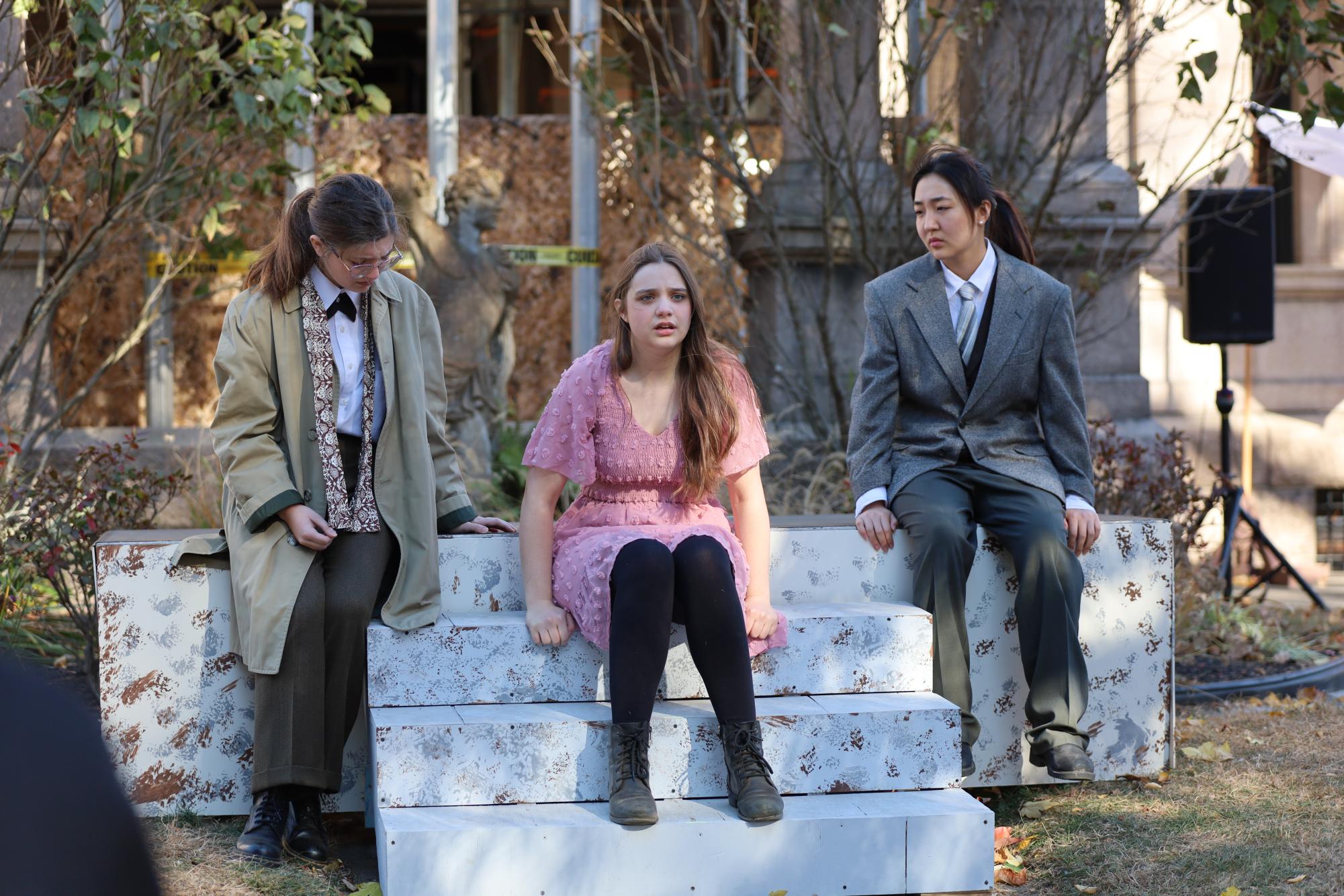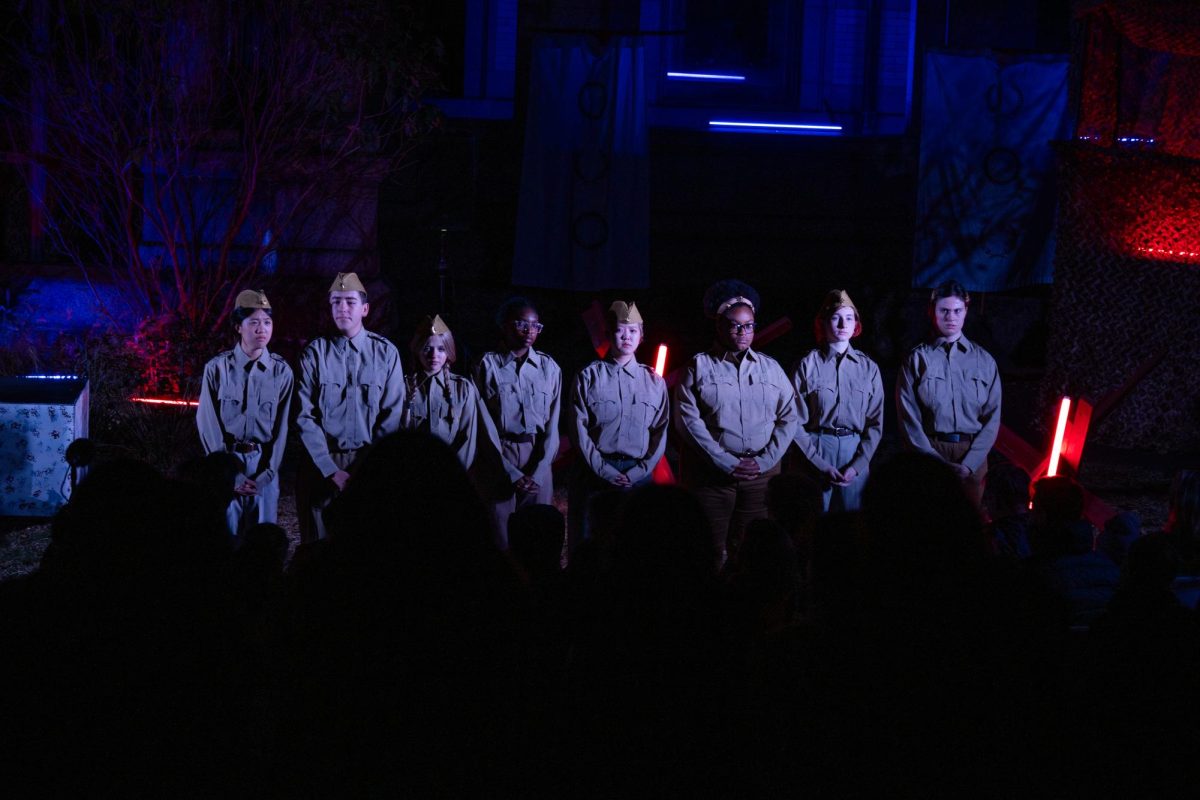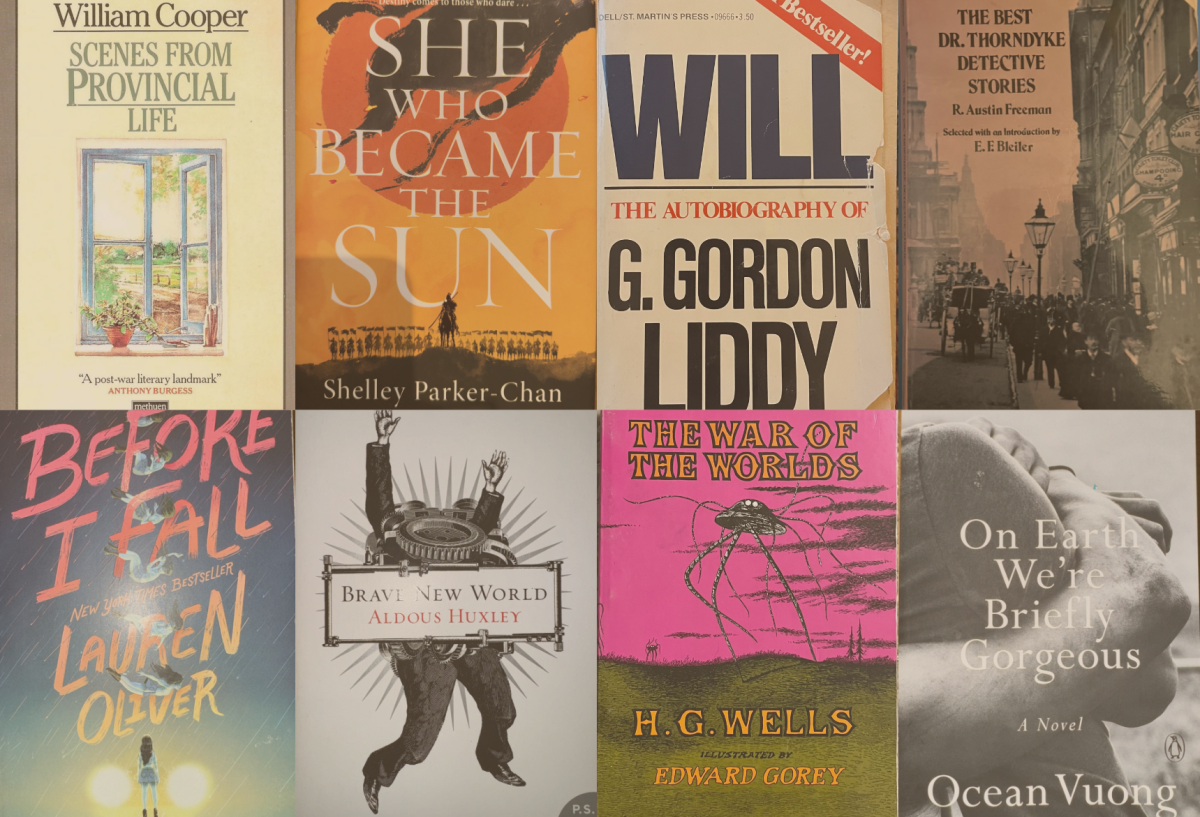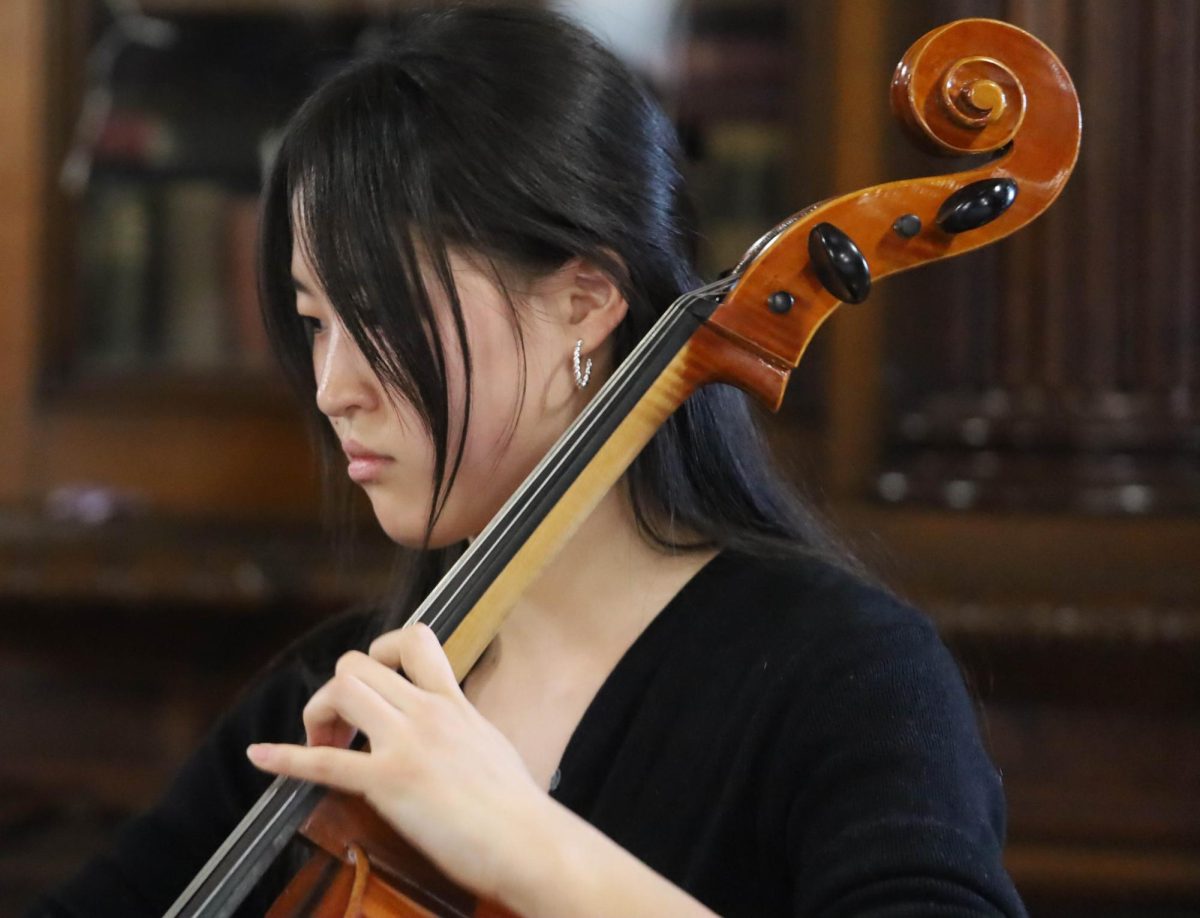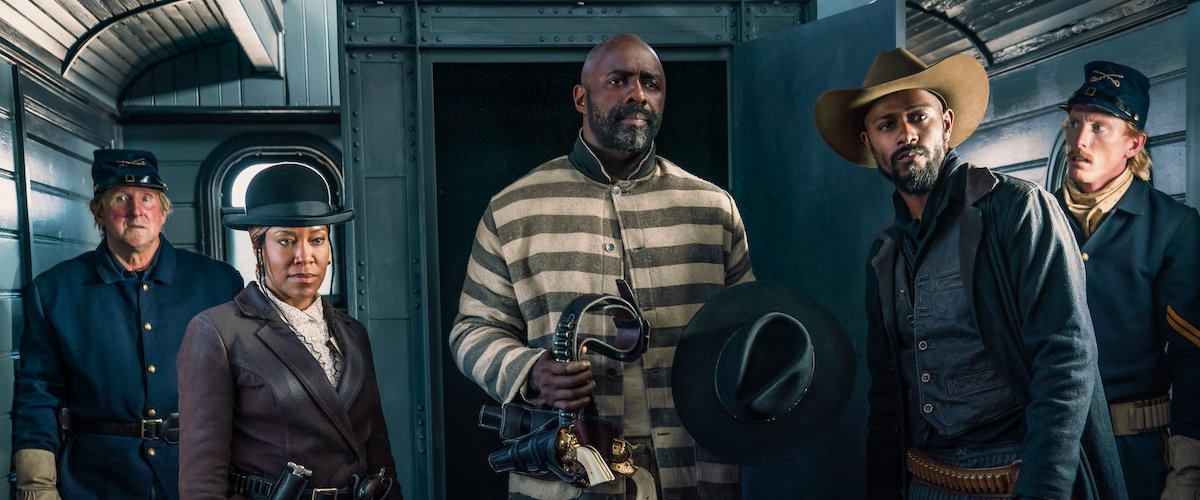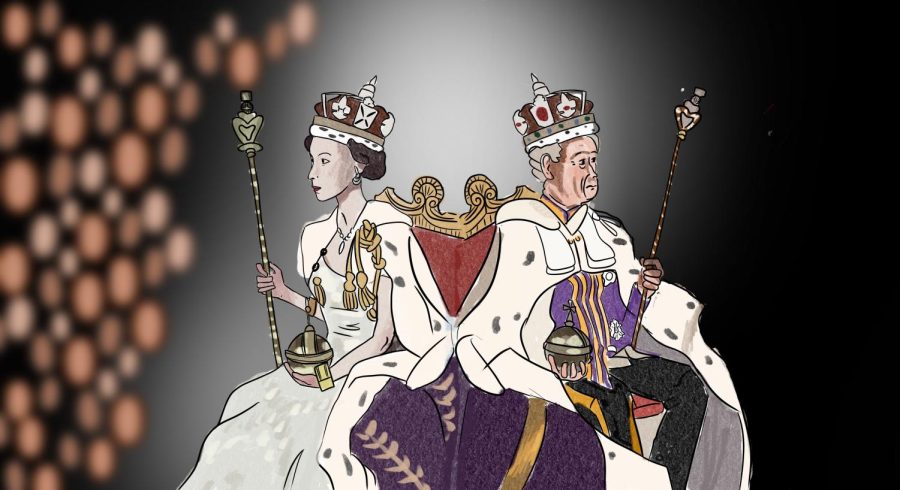During the night performances of the fall play, performed by two casts this year, the famous Greek characters of “Antigone” came to life at the circle in front of Esterwood, illuminated by an outdoor arrangement of motion lights and dressed in World War II-inspired costumes to reflect the postwar atmosphere. Due to Claudia Boettcher Theatre (CBT) renovations, the fall play relocated to the circle outside the oldest building on campus and was performed Oct. 25-27.
In Cast A, the roles of Antigone, Creon and Ismene were played by Josie Leff, Grayson Bokhour and Ayanna Beckett. In Cast B, the characters were played by Gifty Baah, Emerson Riter and Remy Morra Pearlman, respectively.
Theater teacher and director Beth Manspeizer said she wanted to create a slightly different version of “Antigone” by changing the time period from ancient Greece to the World War II era. “I did not want to set [the play] in ancient Greece, but I wanted a nod to ancient Greece and Estherwood gave a bit of that vibe.”
She continued, “I wanted to give a vibe that it’s post-World War II because that war is still in the social consciousness of people.”
Manspezier said she worked with costume designer Jules Cunningham to recreate the World War II atmosphere. The chorus ensemble was dressed in brown scarves to mimic the red and white polka dot scarf worn by Rosie the Riveter and the messengers and guards wore uniforms to indicate they fought in the war.
Despite the cooler outdoor temperatures actors had to rehearse in, tenth grader Julia Panos said she noticed a positive attitude from the cast.
“The play ended up working really well outside because we had all these cool lights and Estherwood is just a really pretty location,” she added.
According to Manspeizer, Peter Wylie, the theater’s technical director, brought and set up all of the lighting equipment used for the show.
Senior Gifty Baah, who played Antigone in Cast B, said the new space also influenced how actors moved around the set. “I think outside, the way your body moves in a space is different. You might want to play a little bigger [and] more exaggerated [when you’re] outdoors versus in an indoor setting where it’s more intimate.”
The show included three ensembles: guards, messengers and the chorus. Manspeizer said that, as a director, making sure all the movement on stage flowed properly was important to her.
Although Antigone was not performed in one of the theaters, Claudia Boettcher or the Experimental Theater, the actors’ costumes and the set design at Estherwood were still able to capture the post-war setting of Antigone. As Manzpeizer said, “Theater can happen anywhere.”



